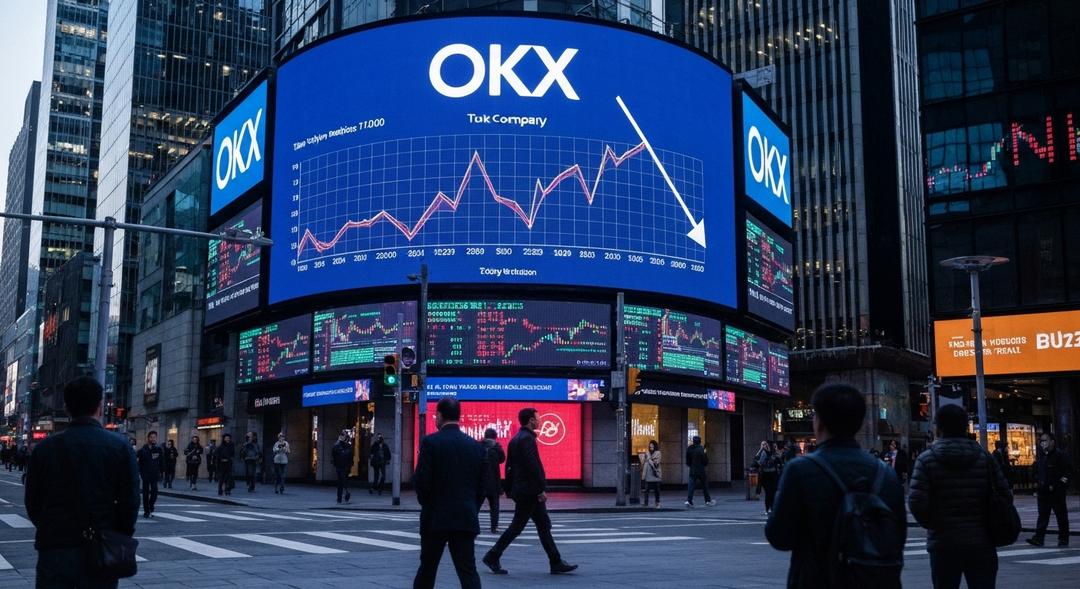Cryptocurrency markets experienced significant developments that reshaped the digital asset landscape. Investors and industry watchers are closely tracking these shifts as they impact both short-term market dynamics and long-term trends.
OKX, a major cryptocurrency exchange, announced a dramatic reduction in the supply of its native token. The company executed a one-time burn of 65.26 million OKB tokens, effectively slashing the total supply by more than half. The value of these destroyed tokens was estimated at around $7.6 billion, marking one of the largest token burns ever conducted by any exchange in the sector.
This reduction realigned OKB’s total cap with that of Bitcoin, setting a new maximum of 21 million OKB in circulation. The burn was completed from OKX’s reserves, permanently removing the destroyed tokens from circulation and creating an environment of scarcity. Notably, shortly after the event, OKB’s market price soared from $46 to an impressive $142 before settling near $102. Trading volumes exploded, with the figure jumping by 13,000 percent up to $723 million as traders moved rapidly to adjust their holdings and attempt to benefit from the limited supply.
This strategy resembles tactics used by competitors, like Binance’s BNB quarterly token burns, which also tend to stimulate price activity and attract trading interest around those periods. By reducing outstanding supply, exchanges can spark more demand and sometimes bolster the perceived value of their native tokens. Such moves reflect the growing competition among platforms to provide additional value and generate excitement for their communities.
Ethereum is also seeing remarkable on-chain activity recently. The daily transaction count on Ethereum’s network has climbed steadily, with the latest numbers approaching the record highs witnessed in January 2024. Market analysts suggest several factors are at play: rising Ethereum prices, expanded mainnet capacity, and the lowered cost for decentralized finance activity have all contributed.
Upgrades to the Ethereum network, including a significant boost to its gas limit, have allowed more transactions to be processed per block, easing congestion and reducing transaction fees. This has made Ethereum more attractive for applications such as peer-to-peer payments and DeFi protocols, which now regularly enjoy transfer costs under a dollar. With these changes, stablecoin usage and decentralized applications are thriving, highlighting Ethereum’s ongoing evolution and resilience in a dynamic sector.
Cryptocurrency users are also dealing with emerging security challenges. A sophisticated scheme has used fake trading bots and YouTube tutorials to steal more than $1 million from unsuspecting investors. Attackers have taken advantage of public interest in automated trading by posting convincing video content and distributing contracts masquerading as lucrative bots. Viewers were guided through steps that led them to deploy malicious smart contracts, which actually funneled their funds to addresses controlled by attackers. The structure of these contracts made it challenging to identify the fraudulent destination of the funds and even harder to reverse the transactions.
Trust in digital protocols has become paramount, especially with the growth of decentralized finance like trustless vaults. Projects such as Babylon have introduced systems that allow cryptocurrency holders to deposit assets without surrendering control to centralized intermediaries. Using secure smart contracts, users can now deploy their bitcoins within DeFi environments for purposes including lending, stablecoin creation, and support for proof of stake mechanisms. The rewards are paid in the project’s native token, further incentivizing adoption.
Babylon’s approach showcases a wider effort in the crypto sector to integrate the vast liquidity of major coins like bitcoin into broader DeFi frameworks. This integration strengthens the reliability of protocols, offering community members both security and new income pathways. As technology matures, the emphasis on protecting user funds and creating more accessible financial products continues to drive innovation.
Market participants eager to streamline their approach to crypto mining may consider alternatives to traditional setups. One rapidly growing choice is to Start Cloud Mining, allowing users to tap into shared resources and reduce the overhead typically required for mining operations. These cloud-based solutions offer flexibility and scalability, removing barriers for those interested in mining without the complexities of hardware ownership and management.
In related headlines, advancements are happening outside direct trading and technological upgrades. Sentient, a New York-based technology company, introduced an open-source platform called The GRID. This network enables developers to build and monetize new tools and models for artificial intelligence through a decentralized marketplace, offering another example of the innovation blooming at the intersection of blockchain, finance, and advanced computing.
Meanwhile, major financial firms are investing more resources into blockchain infrastructure. Stripe, a leading payment technology company, recently appointed Matt Huang as chief executive for its upcoming blockchain project, Tempo. Huang is also the co-founder of Paradigm and will continue in that role alongside his new duties, signifying the tight relationship between venture capital and blockchain development.
Policy and regulatory changes are also affecting the industry. Terraform Labs founder Do Kwon pleaded guilty to conspiracy charges in the United States following the collapse of the Terra ecosystem, closing a dramatic chapter in digital asset history. In the political sphere, shifts in advisory roles within the presidential administration are shaping how regulatory bodies approach cryptocurrencies and blockchain technology.
Conclusion
Supply reductions in major tokens, network improvements on established blockchains, and new methods for interacting securely with digital assets have dominated the cryptocurrency conversation. These changes point not just to rapid technical progression but also to a maturing understanding of how tokenomics and protocol upgrades can impact real-world markets and user experience.
The cryptocurrency sector remains vibrant, with fresh initiatives in security, asset management, and technological deployment occurring on many fronts. Whether through operational innovation or regulatory developments, the crypto space is entering a new era that emphasizes accessibility, reliability, and robust growth opportunities for its expanding global community.

Ewan’s fascination with cryptocurrency started through his curiosity about innovative technologies reshaping the financial world. Over the past four years, he has specialized in cloud mining and crypto asset management, diving deep into mining contracts, profitability analysis, and emerging trends. Ewan is dedicated to helping readers understand the technical and economic aspects of crypto mining, making complex information accessible and actionable.




